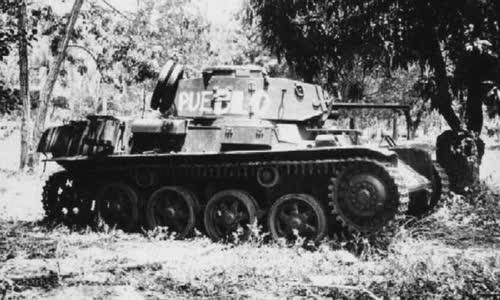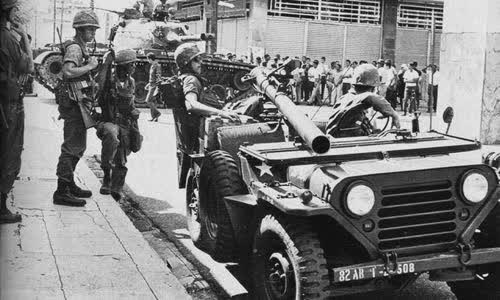The US military intervention in the Dominican Republic to establish a ceasefire, leading to a rare tank battle in the history of the Western Hemisphere.
Tanks are rarely used in conflicts in the Western Hemisphere, an area considered America's backyard, and tank matches are even rarer.

L-60 tank of the Dominican army Photo: Wikipedia
The United States has repeatedly intervened in the Dominican Republic, even occupied and operated the customs office of this country in the period 1916-1924.
After Trujillo was assassinated in 1961, the Dominican Republic continued to have coups when individuals backed by the military were overthrown.
In April 1965, Dominica fell into a bloody civil war between pro-Bosch constitutionalists led by Colonel Francisco Caamano and the Loyalists led by air force general Elias Wessin y Wessin.
On April 27, 1965, the US Ambassador held a reconciliation conference between the two sides, but was accused of bias, causing the Constitutional leader to decide to continue fighting.
The Loyalist infantry could not keep up with the tanks.
On April 28, 1965, US President Johnson deployed a battalion from the 6th Marine Expeditionary Brigade to assist in the evacuation of American citizens.
An American soldier was shot dead near the embassy, and a firefight that followed killed a local girl.
On April 29, 1965, the Loyal forces began to collapse.

US forces on the streets of Santo Domingo in 1965 Photo: Latin America Studies
One day later, the 82nd Paratrooper Division was airlifted to the San Isidro base and the two remaining battalions of the 6th Marine Brigade. At that time, the total number of American troops in Dominica was 21,900 men.
On the surface, the United States proved neutral and imposed a ceasefire by advancing into the territory controlled by the Constitutionalists to protect the Loyalists' lines.
During the skirmishes, the US Marines' armored armor had several encounters with Constitutional tanks.
One L-60 was also destroyed by the American M-50 Ontos anti-tank with six 106 mm M40 recoilless cannons.
After paratroopers and US Marines joined forces, the two warring factions were split in the capital, Santo Domingo.
However, the small fighting continued as the two sides were not satisfied with the ceasefire.
Fearing weakening influence over the interim government, on June 15, 1965, the Constitutionalists launched an attack on the defensive positions of the Brazilian army and the US 82nd Division with mortars and machine guns
In 1966, the US withdrew all its troops from Dominica after Joaquin Balaguer was elected president.



 Janit Davies
Janit Davies







